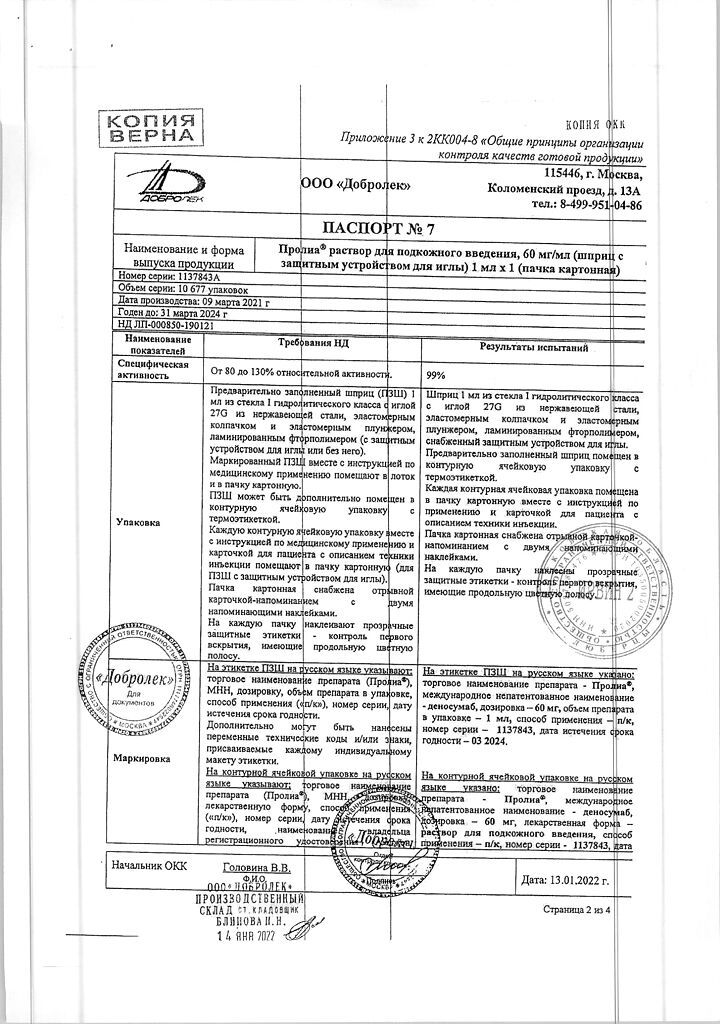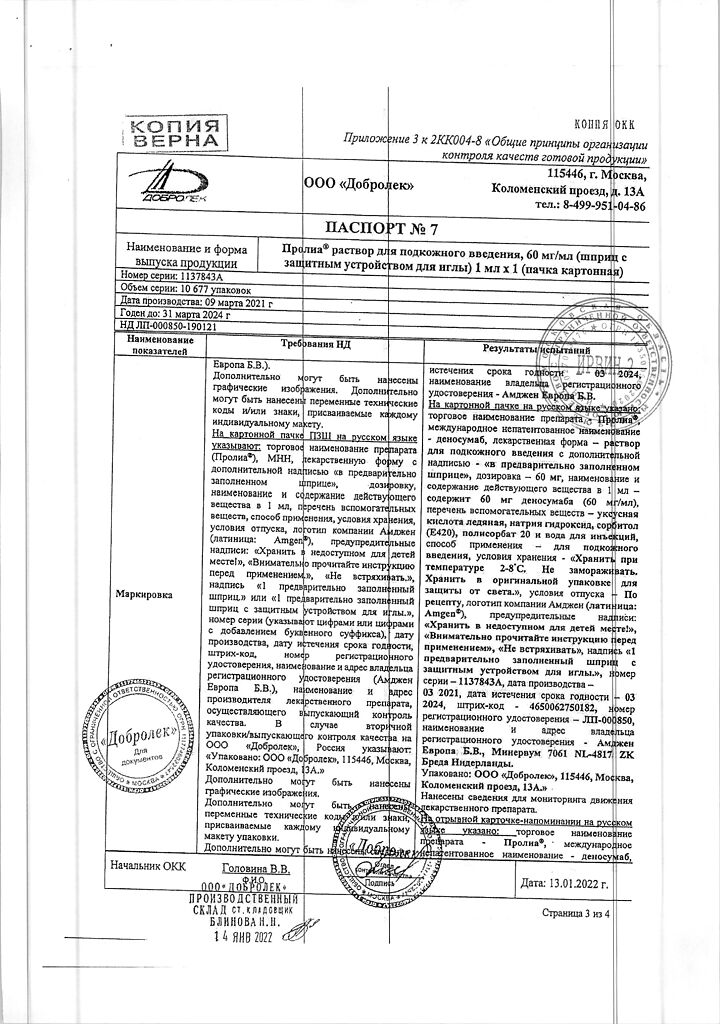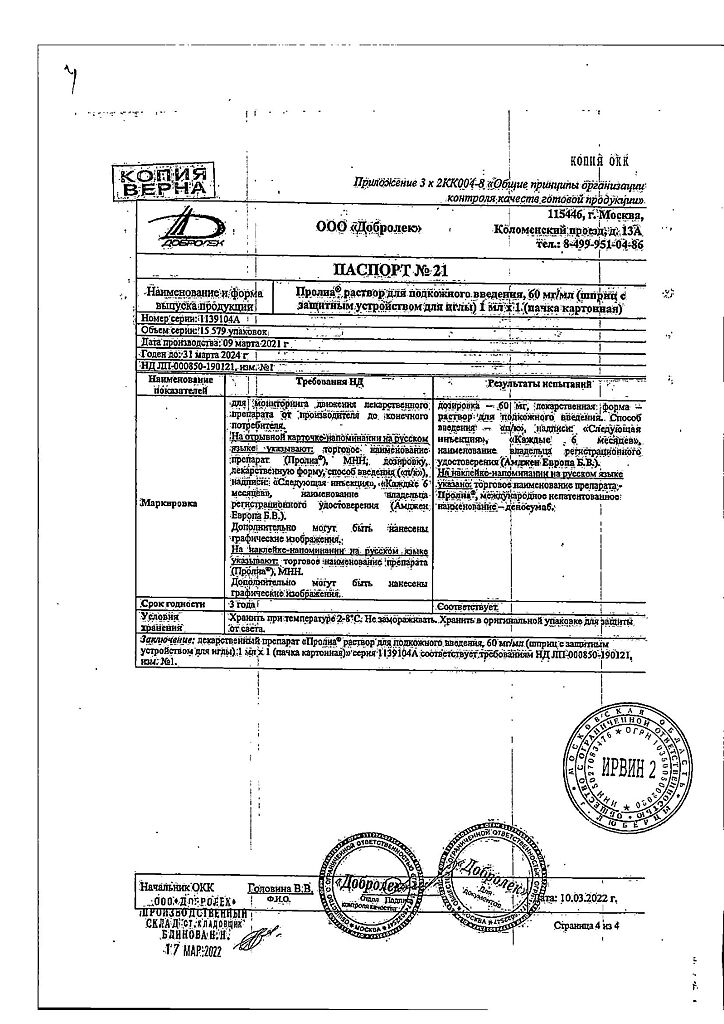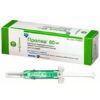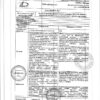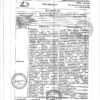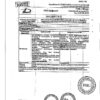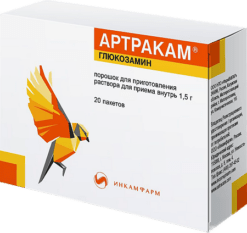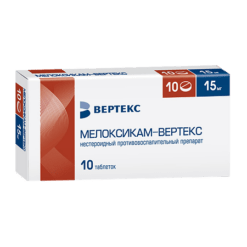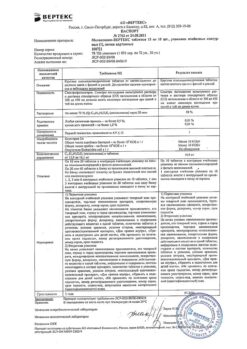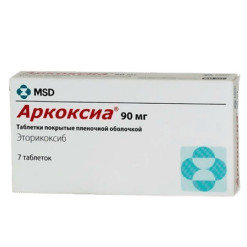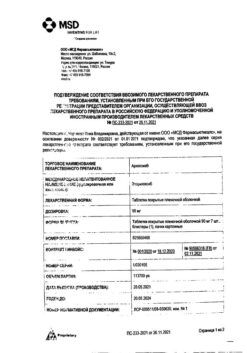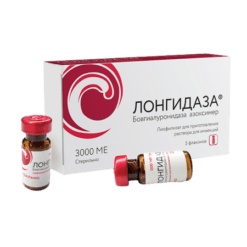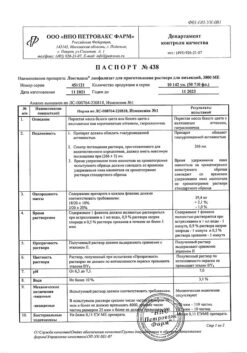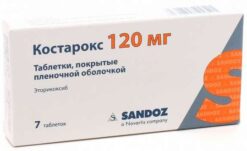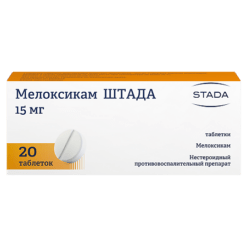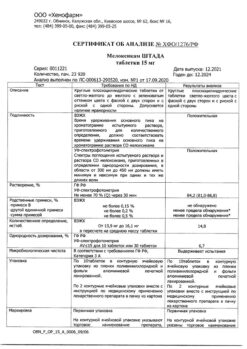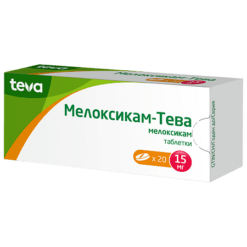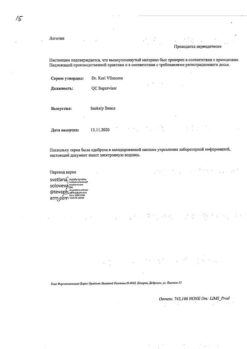No products in the cart.
Prolia, 60 mg/ml 1 ml
€1.00
Out of stock
(E-mail when Stock is available)
Description
Prolia is an inhibitor of bone resorption.
Pharmacodynamics
The mechanism of action
. Denosumab is a fully human monoclonal antibody (IgG2) with high affinity and specificity to the nuclear factor activator receptor κB (RANKL) ligand, and thereby prevents activation of the single RANKL receptor, nuclear factor activator κB (RANK), located on the surface of osteoclasts and their precursors. Thus, prevention of RANKL/RANK interaction inhibits formation, activation and longevity of osteoclasts. As a result, denosumab reduces bone resorption and increases the mass and strength of the cortical and trabecular bone layers.
Pharmacodynamic effects
Administration of denosumab at a dose of 60 mg resulted in a rapid decrease in serum concentrations of the bone resorption marker, 1C-telopeptide (STX), by approximately 70% within 6 h after subcutaneous administration and by approximately 85% over the following 3 days. The decrease in CTC concentration remained stable at the 6-month inter-dosing interval. The rate of decrease in serum CTC concentration partially decreased with decreasing serum denosumab concentration, reflecting the reversible effect of denosumab on bone remodeling. These effects were observed throughout the entire course of treatment. Consistent with the physiological relationship between formation and resorption in bone remodeling, a decrease in bone formation markers (e.g., bone-specific ALP and serum type I collagen N-terminal propeptide) was observed from the first month after the first dose of denosumab. Bone remodeling markers (markers of bone formation and bone resorption) generally reached pre-treatment period concentrations no later than 9 months after the last drug dose. After resumption of treatment with denosumab, the degree of decline in CTC concentrations was similar to the degree of decline in CTC concentrations at the start of treatment with denosumab.
The switch from alendronic acid treatment (mean duration of 3 years) to denosumab was shown to result in additional reductions in serum CTC concentrations compared to the group of postmenopausal women with low bone mass who continued alendronic acid treatment. At the same time, changes in serum calcium content were similar in both groups.
In experimental studies, inhibition of RANK/RANKL simultaneously with binding of osteoprotegerin to the Fc-fragment (OPG-Fc) resulted in stunted bone growth and impaired tooth eruption. Therefore, treatment with denosumab may inhibit bone growth with open growth zones in children and lead to dental eruption disorders.
Denosumab is a human monoclonal antibody, so like other drugs of protein nature, there is a theoretical risk of immunogenicity. More than 13,000 patients were screened for binding antibodies using sensitive electrochemiluminescence combined with immunoassays. Less than 1% of patients taking denosumab for 5 years were determined to have antibodies (including pre-existing, transient, and growing antibodies). Seropositive patients were further screened for neutralizing antibodies using an in vitro chemiluminescence assay in cell culture; no neutralizing antibodies were detected. No changes in pharmacokinetic profile, toxic profile or clinical response due to antibody formation were detected.
Clinical efficacy
The treatment of postmenopausal osteoporosis
In women with postmenopausal osteoporosis, Prolia™ increases bone mineral density and reduces the incidence of femoral neck fractures and vertebral and nonvertebral fractures. The efficacy and safety of denosumab in the treatment of postmenopausal osteoporosis has been proven in a 3-year study. The results of the study show that denosumab significantly reduces the risk of vertebral and nonvertebral fractures and femoral neck fractures in postmenopausal women with osteoporosis compared to placebo. The study included 7,808 women, of whom 23.6% had frequent vertebral fractures. All three efficacy endpoints for fractures achieved statistically significant values as assessed by a pre-specified sequential testing regimen.
The reduction in risk of new vertebral fractures with denosumab over 3 years remained stable and significant. The risk was reduced regardless of the 10-year probability of major osteoporotic fractures. A history of frequent vertebral fractures, nonvertebral fractures, patient age, bone mineral density, level of bone remodeling, and prior therapy for osteoporosis also had no effect on risk reduction.
In postmenopausal women over 75 years of age, denosumab reduced the incidence of new vertebral fractures, and it reduced the incidence of femoral neck fractures, according to post hoc analysis.
The reduction in the incidence of nonvertebral fractures was independent of the 10-year probability of major osteoporotic fractures. Denosumab significantly increased bone mineral density in all anatomical areas compared to placebo. Bone mineral density was determined 1, 2, and 3 years after the start of therapy. Similar effects on bone mineral density were observed in the lumbar spine regardless of age, race, body mass index (BMI), bone mineral density, and bone remodeling. Histological studies confirmed normal bone architectonics and, as expected, reduced bone remodeling compared to placebo. No pathological changes, including fibrosis, osteomalacia and disruption of bone architectonics, were observed.
Clinical efficacy in the treatment of loss of bone mass caused by hormondeprivation therapy or aromatase inhibitor therapy
The treatment of loss of bone mass caused by androgen deprivation
The efficacy and safety of denosumab in the treatment of bone mass loss associated with androgen deprivation was proven in a 3-year study including 1,468 patients with nonmetastatic prostate cancer. Significant increases in bone mineral density were determined in the lumbar spine, entire femur, femoral neck, and femoral trochanter 1 month after the first dose. The increase in lumbar spine bone mineral density was independent of age, race, geographic region, BMI, initial bone mineral density values, bone remodeling; duration of hormondeprivation therapy and history of vertebral fracture.
Denosumab significantly reduced the risk of new vertebral fractures over 3 years of use. A reduction in risk was observed after 1 year and after 2 years of therapy. Denosumab also reduced the risk of more than one osteoporotic fracture of any location.
The treatment of bone loss in women receiving aromatase inhibitor therapy for breast cancer
The efficacy and safety of denosumab in treating bone loss caused by adjuvant aromatase inhibitor therapy was evaluated in a 2-year study including 252 patients with nonmetastatic breast cancer. Denosumab significantly increased bone mineral density in all anatomic regions, compared with placebo, over 2 years. Increased bone mineral density was observed in the lumbar spine one month after the first dose. Positive effects on bone mineral density in the lumbar spine were observed regardless of age, duration of aromatase inhibitor therapy, BMI, prior chemotherapy, prior use of a selective estrogen receptor modulator (SERM) and time since the onset of menopause.
Pharmacokinetics
In p/q administration, denosumab is characterized by nonlinear, dose-dependent pharmacokinetics over a wide dose range and dose-dependent increases in exposure for doses of 60 mg (or 1 mg/kg) and higher.
Introduction
After a 60-mg dose of denosumab administered b/w, bioavailability was 61% and Cmax was 6 µg/mL (range 1-17 µg/mL), these parameters were observed after 10 days (range 2-28 days). After Cmax was reached, serum drug content decreased from T1/2 26 days (range 6-52 days) and then for 3 months (range 1.5-4.5 months). In 53% of patients, denosumab was undetectable in serum after 6 months from the last drug administration.
Distribution
There were no changes in the pharmacokinetic parameters of denosumab and no changes in cumulation over the course of multiple doses of 60 mg every 6 months.
Metabolism
Denosumab is composed of amino acids and carbohydrates like conventional immunoglobulin. Based on preclinical data, the metabolism of denosumab is expected to follow an immunoglobulin clearance pathway that results in the breakdown into small peptide chains and individual amino acids.
Elevation
Based on preclinical data, excretion of denosumab will follow the clearance pathway of all immunoglobulins, which will result in the breakdown into small peptide chains and individual amino acids.
Patients who are elderly (65 years or older). Age has no significant effect on the pharmacokinetics of denosumab, according to pharmacokinetic analysis in a patient population of 28 to 87 years.
Children and adolescents (under 18 years of age). Pharmacokinetics in children have not been studied.
Racial origin. The pharmacokinetics of denosumab are independent of race.
Patients with renal impairment. In a study of data from 55 patients with varying degrees of renal impairment, including patients on dialysis, the degree of renal impairment had no effect on the pharmacokinetics and pharmacodynamics of denosumab, so no dosing adjustments for denosumab in chronic renal impairment are required.
Chronic hepatic insufficiency. No studies have been conducted on the effect of hepatic insufficiency on the pharmacokinetics of denosumab.
Indications
Indications
Treatment of postmenopausal osteoporosis;
treatment of bone loss in women receiving aromatase inhibitor therapy for breast cancer and in men with prostate cancer receiving hormone deprivation therapy.
Pharmacological effect
Pharmacological effect
Prolia is a bone resorption inhibitor.
Pharmacodynamics
Mechanism of action
Denosumab is a fully human monoclonal antibody (IgG2) that has high affinity and specificity for receptor activator of nuclear factor κB (RANKL) ligand and thereby interferes with the activation of the only RANKL receptor, activator of nuclear factor κB (RANK), located on the surface of osteoclasts and their precursors. Thus, preventing the RANKL/RANK interaction inhibits osteoclast formation, activation, and survival. As a result, denosumab reduces bone resorption and increases the mass and strength of cortical and trabecular bone layers.
Pharmacodynamic effects
Denosumab 60 mg rapidly decreased serum concentrations of the bone resorption marker 1C-telopeptide (CTX) by approximately 70% within 6 hours of subcutaneous administration and by approximately 85% over the next 3 days. The reduction in CTX concentrations remained stable over the 6-month dosing interval. The rate of decline in serum CTX concentrations was partially attenuated by decreasing denosumab serum concentrations, reflecting the reversibility of the effects of denosumab on bone remodeling. These effects were observed throughout the course of treatment. Consistent with the physiological relationship between the processes of formation and resorption during bone tissue remodeling, a decrease in the content of markers of bone formation (for example, bone-specific ALP and serum N-terminal propeptide of type I collagen) was observed from the first month after the administration of the first dose of denosumab. Markers of bone turnover (markers of bone formation and bone resorption) generally reached pre-treatment concentrations no later than 9 months after the last dose of the drug. After resumption of denosumab treatment, the degree of decrease in CTX concentrations was similar to the degree of decrease in CTX concentrations at the beginning of denosumab treatment.
Switching from alendronic acid treatment (median duration of use 3 years) to denosumab was shown to result in an additional reduction in serum CTX concentrations compared with a group of postmenopausal women with low bone mass who continued alendronic acid treatment. However, changes in serum calcium levels were similar in both groups.
In experimental studies, inhibition of RANK/RANKL simultaneously with binding of osteoprotegerin to the Fc fragment (OPG-Fc) resulted in decreased bone growth and impaired tooth eruption. Therefore, treatment with denosumab may inhibit the growth of bones with open growth plates in children and lead to teething disorders.
Immunogenicity
Denosumab is a human monoclonal antibody, therefore, as with other protein drugs, there is a theoretical risk of immunogenicity. More than 13,000 patients were screened for binding antibody production using a sensitive electrochemiluminescence technique combined with an immunoassay. Less than 1% of patients treated with denosumab for 5 years had detectable antibodies (including pre-existing, transient and growing). Seropositive patients were further screened for the development of neutralizing antibodies using an in vitro cell culture chemiluminescence assay, and no neutralizing antibodies were detected. There were no changes in the pharmacokinetic profile, toxic profile or clinical response due to antibody formation.
Clinical effectiveness
Treatment of osteoporosis in postmenopause
In women with postmenopausal osteoporosis, Prolia™ increases bone mineral density and reduces the incidence of hip fractures, vertebral and non-vertebral fractures. The effectiveness and safety of denosumab in the treatment of postmenopausal osteoporosis was proven in a 3-year study. The study results show that denosumab significantly, compared with placebo, reduces the risk of vertebral and non-vertebral fractures, and hip fractures in postmenopausal women with osteoporosis. The study included 7808 women, of whom 23.6% had common vertebral fractures. All three fracture efficacy endpoints reached statistically significant values assessed using a prespecified sequential testing design.
The reduction in the risk of new vertebral fractures with denosumab remained stable and significant for more than 3 years. The risk decreased regardless of the 10-year likelihood of major osteoporotic fractures. The risk reduction was also not affected by a history of frequent vertebral fractures, nonvertebral fractures, patient age, bone mineral density, level of bone turnover, or previous therapy for osteoporosis.
In postmenopausal women over 75 years of age, denosumab reduced the incidence of new vertebral fractures and, in a post hoc analysis, reduced the incidence of hip fractures.
Reductions in the incidence of nonvertebral fractures were observed regardless of the 10-year incidence of major osteoporotic fractures. Denosumab significantly increased bone mineral density in all anatomical regions compared with placebo. Bone mineral density was determined 1, 2 and 3 years after the start of therapy. Similar effects on bone mineral density were noted in the lumbar spine regardless of age, race, body mass index (BMI), bone mineral density, and bone remodeling. Histological studies confirmed normal bone architecture and, as expected, decreased bone turnover compared with placebo. No pathological changes were noted, including fibrosis, osteomalacia, and disorders of bone tissue architecture.
Clinical efficacy in the treatment of bone loss caused by hormone deprivation therapy or aromatase inhibitor therapy
Treatment of bone loss caused by androgen deprivation
The efficacy and safety of denosumab in the treatment of bone loss associated with androgen depletion was demonstrated in a 3-year study of 1468 patients with non-metastatic prostate cancer. Significant increases in bone mineral density were measured in the lumbar spine, total femur, femoral neck, and femoral trochanter 1 month after the first dose. Increases in lumbar spine bone mineral density were independent of age, race, geographic region, BMI, baseline bone mineral density, and bone remodeling; duration of hormone deprivation therapy and a history of vertebral fracture.
Denosumab significantly reduced the risk of new vertebral fractures over 3 years of use. A reduction in risk was observed 1 year and 2 years after the start of therapy. Denosumab also reduced the risk of more than one osteoporotic fracture of any location.
Treatment of bone loss in women receiving aromatase inhibitor therapy for breast cancer
The efficacy and safety of denosumab in the treatment of bone loss induced by adjuvant aromatase inhibitor therapy was assessed in a 2-year study of 252 patients with nonmetastatic breast cancer. Denosumab significantly increased bone mineral density in all anatomical sites compared with placebo over 2 years. An increase in bone mineral density was observed in the lumbar spine one month after the first dose. Positive effects on lumbar spine bone mineral density were observed regardless of age, duration of aromatase inhibitor therapy, BMI, prior chemotherapy, prior selective estrogen receptor modulator (SERM) use, and time since menopause.
Pharmacokinetics
When administered subcutaneously, denosumab exhibits nonlinear dose-dependent pharmacokinetics over a wide dose range and a dose-dependent increase in exposure for doses of 60 mg (or 1 mg/kg) and above.
Suction
After subcutaneous administration of denosumab at a dose of 60 mg, bioavailability was 61% and Cmax was 6 μg/ml (range 1–17 μg/ml), these parameters were observed after 10 days (range 2–28 days). After reaching Cmax, the drug content in the blood serum decreased from T1/2 26 days (range 6–52 days) and then over a period of 3 months (range 1.5–4.5 months). In 53% of patients, denosumab was not detected in the blood serum after 6 months from the last drug administration.
Distribution
There were no changes in the pharmacokinetic parameters of denosumab, nor accumulation during the entire period of taking multiple doses of the drug 60 mg every 6 months.
Metabolism
Denosumab consists of amino acids and carbohydrates, like regular immunoglobulin. Based on data from preclinical studies, denosumab is expected to be metabolized via the immunoglobulin clearance pathway, resulting in breakdown into small peptide chains and individual amino acids.
Removal
Based on preclinical data, the elimination of denosumab will occur through the elimination pathway of all immunoglobulins, resulting in breakdown into small peptide chains and individual amino acids.
Selected patient groups
Elderly patients (65 years or older). Age does not have a significant effect on the pharmacokinetics of denosumab, according to pharmacokinetic analysis in a population of patients from 28 to 87 years.
Children and teenagers (up to 18 years old). Pharmacokinetics in children has not been studied.
Race. The pharmacokinetics of denosumab are independent of race.
Patients with renal failure. In a study of 55 patients with varying degrees of renal insufficiency, including patients on dialysis, the degree of renal insufficiency did not affect the pharmacokinetics and pharmacodynamics of denosumab, so no adjustment of the denosumab dosing regimen is required for chronic renal failure.
Chronic liver failure. No studies have been conducted to study the effect of liver failure on the pharmacokinetics of denosumab.
Special instructions
Special instructions
It is recommended to take calcium and vitamin D supplements while using Prolia™.
Hypocalcemia can be corrected by taking calcium and vitamin D supplements in adequate doses before starting denosumab therapy. It is recommended to monitor calcium concentrations in patients predisposed to hypocalcemia (see “Side Effects”).
Patients receiving Prolia™ may develop infections of the skin and its appendages (mainly inflammation of the subcutaneous tissue), in some cases requiring hospitalization. These reactions were reported more frequently in the denosumab group (0.4%) than in the placebo group (0.1%) (see Adverse Reactions). However, the overall incidence of skin infections was comparable in the denosumab and placebo groups. Patients should be instructed to immediately seek medical attention if symptoms and signs of subcutaneous tissue inflammation develop.
Osteonecrosis of the jaw has been reported in patients with advanced cancer receiving 120 mg denosumab every 4 weeks. There are isolated reports of the development of osteonecrosis of the jaw at a dose of 60 mg every 6 months (see “Side effects”).
Persons allergic to latex should not touch the rubber needle cap (latex derivative).
Influence on the ability to drive vehicles and handle equipment. No studies have been conducted on the effect on the ability to drive vehicles and operate machinery.
Active ingredient
Active ingredient
Denosumab
Composition
Composition
Active ingredient:
denosumab 60 mg;
Excipients:
sorbitol (E420) – 47 mg;
glacial acetic acid – 1 mg;
polysorbate 20 – 0.1 mg;
sodium hydroxide – up to pH 5.0–5.5;
water for injection – up to 1 ml
Pregnancy
Pregnancy
There are no data on the use of the drug during pregnancy. Prolia is not recommended for use in pregnant women.
In toxicological studies in nonhuman primates, denosumab had no effect on fertility or fetal development at doses 100 times those recommended for clinical use.
Experiments on mice with the gene turned off showed that the absence of RANKL can lead to impaired development of lymph nodes in the fetus, and in the postnatal period can cause impaired teething and bone growth; It is also possible to influence the maturation of the mammary gland, which can lead to weakened lactation.
It is unknown whether denosumab is excreted in breast milk. Because denosumab is known to potentially cause adverse reactions in infants, it is necessary to either stop breastfeeding or discontinue Prolia.
Contraindications
Contraindications
Hypersensitivity to any of the components of the drug; hypocalcemia.
Side Effects
Side Effects
Infections and infestations: inflammation of the subcutaneous tissue.
From the side of metabolism and electrolyte metabolism: hypocalcemia.
From the organs of vision: cataract.
From the skin and subcutaneous fat: eczema.
From the musculoskeletal system and connective tissue: pain in the extremities; osteonecrosis of the jaw.
Interaction
Interaction
No drug interaction studies have been conducted.
The drug should not be mixed with other drugs.
Overdose
Overdose
In clinical studies, there were no cases of overdose of Prolia.
In clinical studies, denosumab doses up to 180 mg were administered every 4 weeks (cumulative dose up to 1080 mg at 6 months).
Storage conditions
Storage conditions
At 2–8 °C (do not freeze)
Shelf life
Shelf life
3 years
Manufacturer
Manufacturer
Amgen Manufacturing Limited, Puerto Rico
Additional information
| Shelf life | 3 years |
|---|---|
| Conditions of storage | At 2-8 °C (do not freeze) |
| Manufacturer | Amgen Manufacturing Limited, Puerto Rico |
| Medication form | solution |
| Brand | Amgen Manufacturing Limited |
Related products
Buy Prolia, 60 mg/ml 1 ml with delivery to USA, UK, Europe and over 120 other countries.


